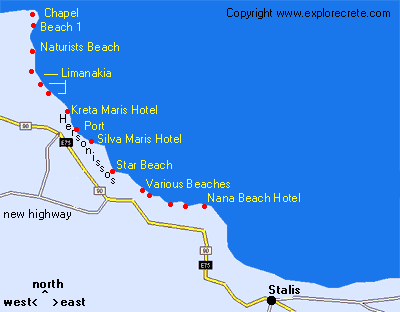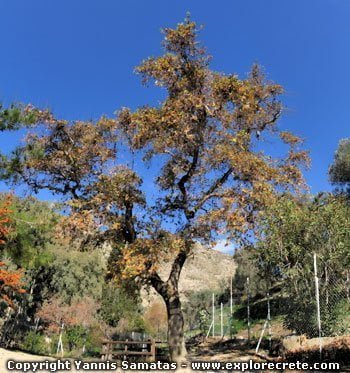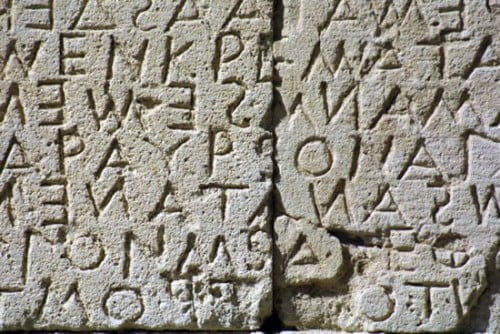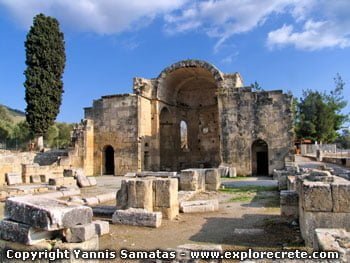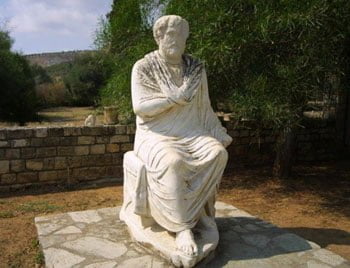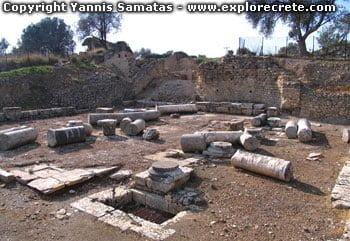Knossos Minoan Palace in Crete
Knossos, Crete
Knossos, the most famous Minoan Palace, lies 5 kilometres south-east of Heraklion, in the valley of the river Kairatos. The river rises at Archanes, flows through Knossos and enters the sea at Katsabas, the ancient Minoan port of Knossos.
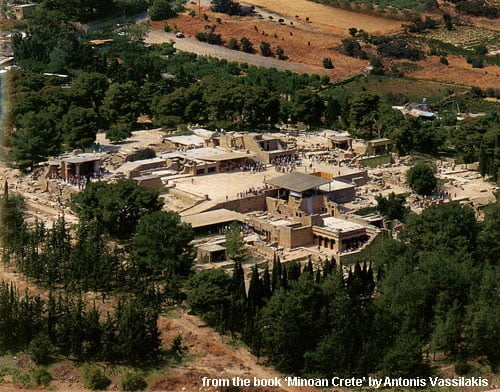
In Minoan times the river flowed all year round and the surrounding hills were covered in oak and cypress trees, where today we see vines and olives. The pine trees inside the archaeological site were planted by Evans.
Constant habitation for 9,000 years has brought about great changes to the natural environment, so it is hard to imagine what the Minoan landscape was like.
Knossos, the 1st and 2nd Palace
The first settlement in the Knossos area was established circa 7000 BC, during the Neolithic Period. The economic, social and political development of the settlement led to the construction of the majestic Palace of Knossos towards the end of the second millennium BC.
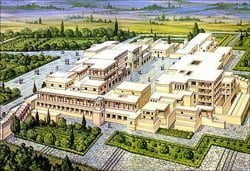
This first Palace was destroyed circa 1700 BC. It was rebuilt and destroyed again by fire, this time definitively, in 1350 BC. The environs of the Palace were transformed into a sacred grove of the goddess Rhea, but never inhabited again.
Knossos was the seat of the legendary King Minos and the main centre of power in Crete. The Palace of Knossos is the monumental symbol of Minoan civilisation, due to its construction, use of luxury materials, architectural plan, advanced building techniques and impressive size.
The first excavation by Minos Kalokairinos
The first large-scale excavation was undertaken in 1878 by the wealthy art-lover Minos Kalokairinos, while Crete was still under Turkish occupation. Kalokairinos excavated part of the West Magazines and brought many large pithoi (storage pots) to light.
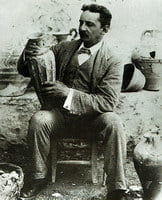
The excavations by Sir Arthur Evans
In March 1900 to 1931, Sir Arthur Evans excavated not only the Palace but the whole surrounding area of Knossos. The Palace complex was excavated in only five years, an extremely short time by today’s standards.
Evans restored the Palace with concrete, a technique condemned by modern archaeologists as arbitrary and damaging to the Minoan structure. Excavations continue and a conservation programme is underway to halt the deterioration of the Palace.
A detailed tour of Knossos
The tour of Knossos starts at the West Entrance to the Palace and circles back to the starting point.
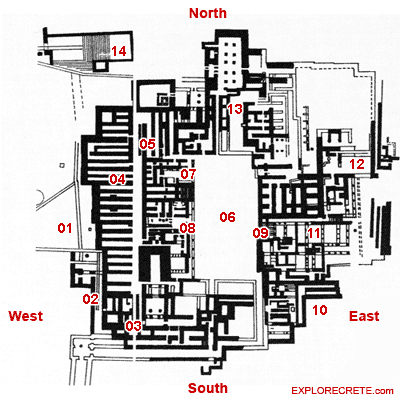
- Start here: West Entrance and West Court: 01
- Corridor of the Procession: 02
- South Propylaeum: 03
- Piano Nobile: 04
- West Magazines of the Palace: 04
- Room with the Minoan Frescos: 05
- Central Court: 06
- Throne Room: 07
- Tripartite Shrine: 08
- Grand Staircase: 09
- Southeast Section of the Palace: 10
- King Minos Apartments: 11
- Queen’s Apartments
- East Wing of the Palace, the Minoan Workshops: 12
- Magazine of the Giant Minoan Pithoi and the Drainage System of the Palace of Knossos: 12
- North Entrance: 13
- Theatre, Customs House and Royal Road: 14
- Caravan Serai and the Royal Tomb of King Minos
© explorecrete.com All Rights Reserved. Reproduction or copying without permission is prohibited.

